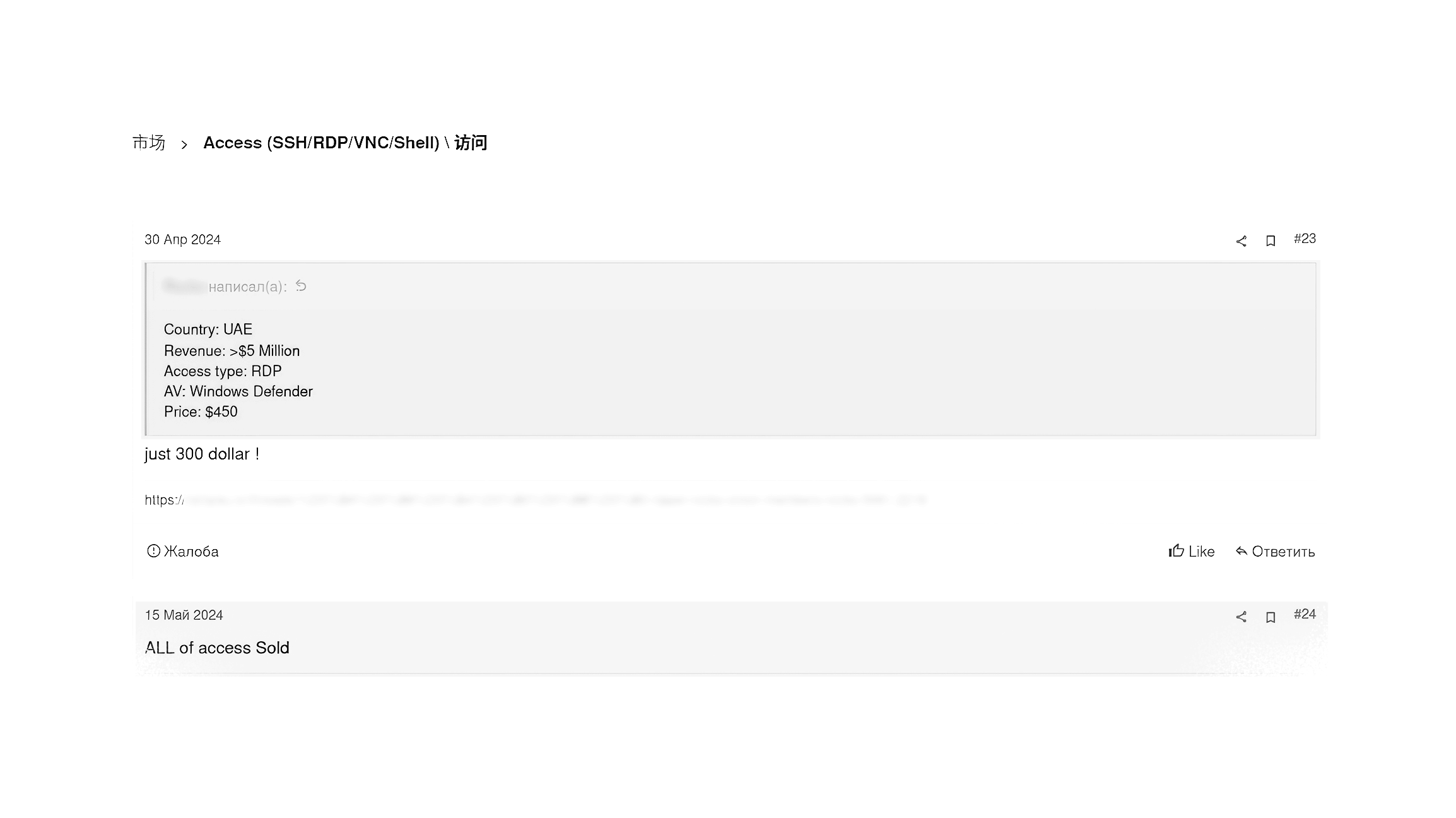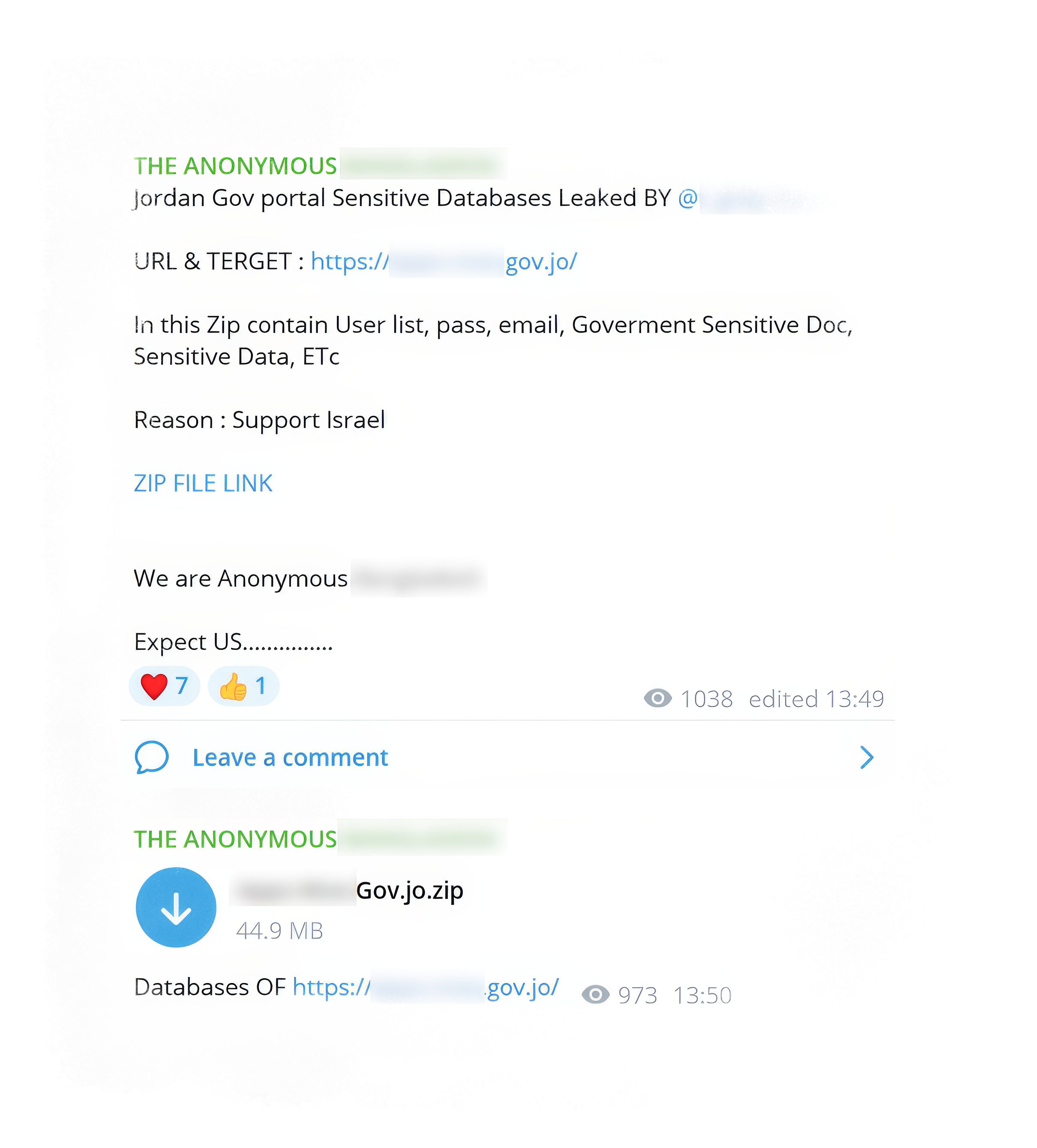Landing page
The Kaspersky Digital Footprint Intelligence team ventured into the depths of the dark web to uncover the cybersecurity threats targeting businesses and governments in the Middle East during the first half of 2024. Our research reveals the most severe, widespread threats, highlights the risks and consequences, and offers a clear protection strategy.
The following countries were included in the research
-

Bahrain
-

Egypt
-

Iraq
-

Jordan
-

Kuwait
-

Lebanon
-

Oman
-

Palestine
-

Qatar
-

Saudi Arabia
-

Syria
-

United Arab Emirates
The report provides detailed insights and statistics on the five most prevalent cybersecurity threats facing the Middle East.
Ideologically motivated pirates are ramping up their activities in the region due to the current geopolitical climate, and making attacks increasingly destructive.

Shadow jewelry fair, where initial access brokers sell entry points to corporate networks, continue to attract cybercriminals and their groups.
In the first half of 2024, we observed 38 unique ads selling access to organizations across various industries, including government, healthcare, IT, manufacturing, and finance.

Deadly sandworms (at least 19 gangs) carried out multiple ransomware attacks during the period analyzed. Their activity usually leads to the most devastating consequences.

Malicious whistleblowers (info-stealing malware) has become ubiquitous, providing adversaries with valuable, up-to-date data (including valid corporate system credentials) for future attacks.
In the first half of 2024 alone, nearly 9.7 million records with stolen user account appeared in logs from various info stealers that were published in the dark web. Of these, 4.4 million were linked to major government bodies. Over the past four years, the total has reached about 27 million records – just under three times as many.

Cave raiders stole sensitive data from various corporations, state entities and other targets and distributed it among other cybercriminals.
In the first half of 2024, over 160 databases containing information on citizens, companies, or organizations were traded or distributed. 22% of these leaks involved citizen data; most came from corporate breaches. Public institutions in the region were hit hardest, accounting for a quarter of all breaches.

Being aware of all the risks from the dark web helps organizations and governments stay ahead of cybercriminals, preventing attacks and fraud before they damage networks or operational integrity.
Armed with this wisdom, the Kaspersky team has shared their knowledge in Whispers from the Dark Web Cave – Cyberthreats in the Middle East.
- This report will be beneficial for:
- C-level managers
- Corporate security specialists
- Risk management professionals
- Cyber Threat Intelligence (CTI) and SOC analysts
- Incident response specialists
- OSINT and darknet researchers
